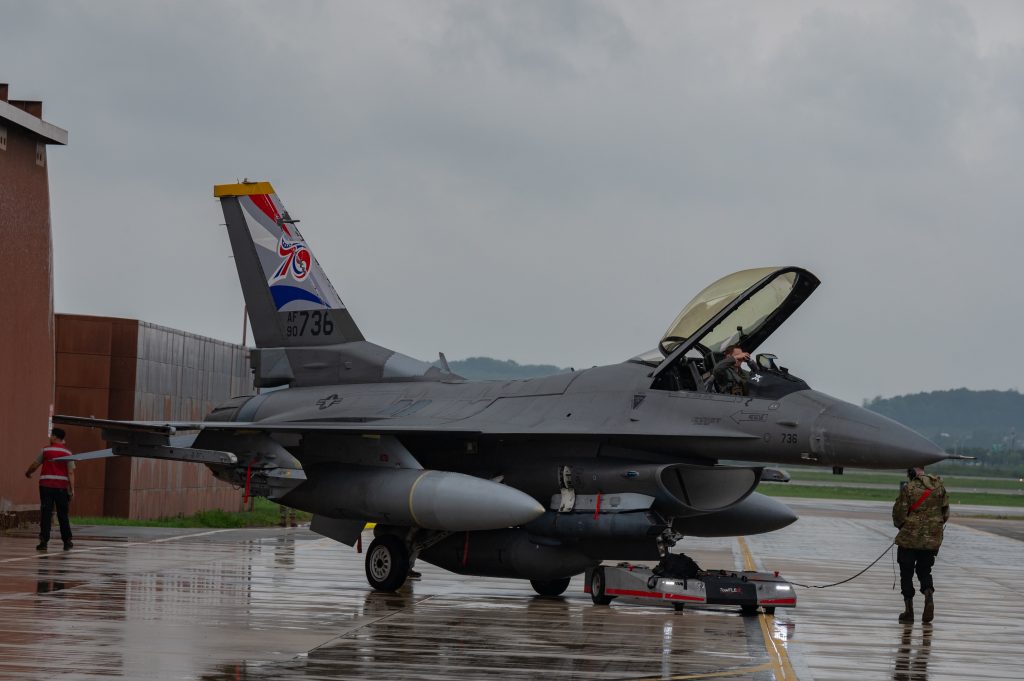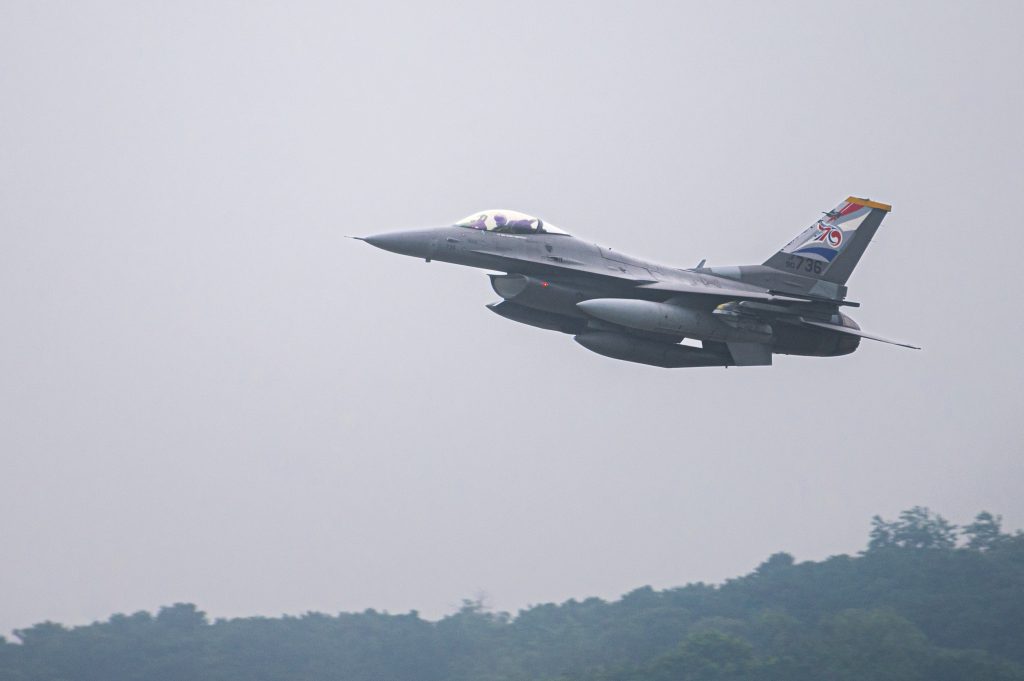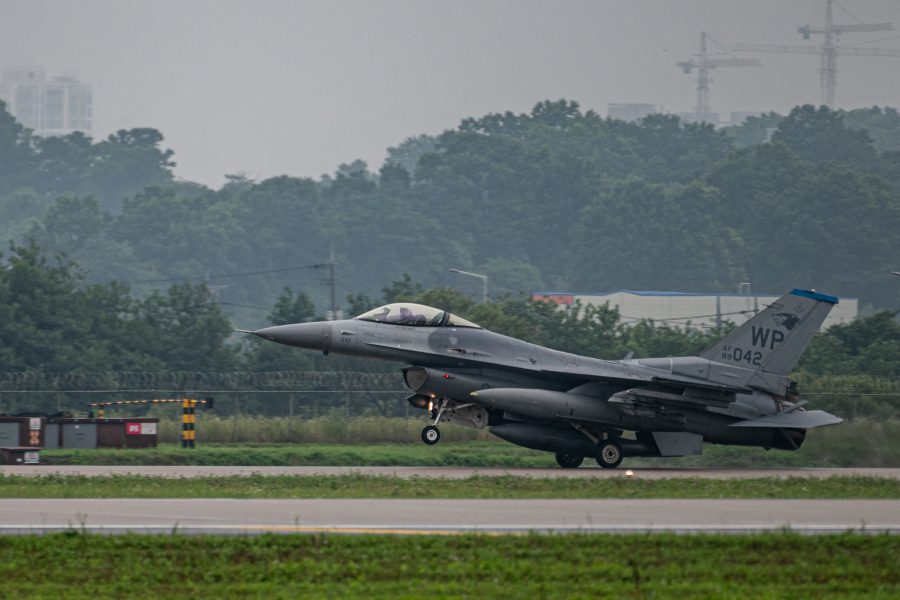The U.S. Air Force is shifting nine extra F-16 fighters to its base closest to the Demilitarized Zone that splits North and South Korea, creating a so-called “Super Squadron.”
The fighters are coming from Kunsan Air Base in the southwestern part of Korea to Osan Air Base, located only 50 miles south of the DMZ.
The 36th Fighter Squadron at Osan will go from 22 jets to 31 with the additions, according to a base release. The transfer will be a yearlong test for how to “maximize combat effectiveness,” with the service evaluating its impact on sortie generation, maintenance, and manpower.
“This test is an opportunity for us to see if squadrons of this size increase our training effectiveness while also increasing our combat capability if deterrence fails,” Lt. Gen. David. R. Iverson, 7th Air Force commander and U.S. Forces Korea deputy commander, said in a release.

Along with the fighters, some 150 Airmen including pilots, engineers, and combat support personnel are relocating to Osan base. The bases are roughly 100 miles apart.
“While we execute this test, we understand these changes may present some challenges for our Airmen and Families,” Iverson added, saying leaders are working to mitigate those impacts while “increasing readiness and war fighting capability.”
The other fighter squadron at Osan Air Base, the 25th Fighter Squadron, remains the only internationally based unit to hold onto the A-10 aircraft. While the exact timeline of how long the Air Force will continue operating the attack aircraft at the base remains uncertain, the fleet has a maintenance contract with several South Korean firms until 2029.
With the increased F-16 presence at the base, some analysts have suggested the USAF may retired the A-10s from the peninsula earlier than originally planned. Secretary of the Air Force Frank Kendall has described the A-10 as “increasingly obsolete and very difficult to maintain,” as the service has been pushing to gradually retire the fleet.

The shift in F-16s to Osan is the latest move by the Air Force to adjust its fighter posture in recent months. PACAF’s 2030 Strategy, released in September 2023, noted that “our current basing posture, optimized 70 years ago, adversely affects our ability to rapidly respond to natural disasters and man-made crises today” and pledged to re-optimize the command’s basing.
Earlier this month, the Pentagon announced it would base 36 F-15EX aircraft at Kadena Air Base in Japan to replace the base’s remaining F-15C/Ds. Over the last several years, in preparation for the retirement of the 48 F-15C/Ds at the base, the service has been rotating fighter deployments to the strategic base in Okinawa, only 400 miles east of Taiwan.
The service is also adding four dozen F-35As to Misawa Air Base to replace its 36 F-16s, making it the first foreign base in the Indo-Pacific to host USAF F-35 fighters and the second overall, after RAF Lakenheath in the U.K.
“In the last year and a half or so, the world has become a very dangerous place,” former PACAF Commander Gen. Kenneth S. Wilsbach said early this year, citing burgeoning concerns regarding China, North Korea and Russia which he considered a Pacific nation.
Osan received its first F-16s back in 1988, after Kunsan became the first overseas base to convert from F-4 Phantom to F-16s in 1981. The Air Force’s latest modernization effort aims to upgrade the F-16 fleet with 22 modifications to include a new radar with active electronically scanned array and Center Display Unit-technology. Kunsan received its first upgraded F-16 last year.


